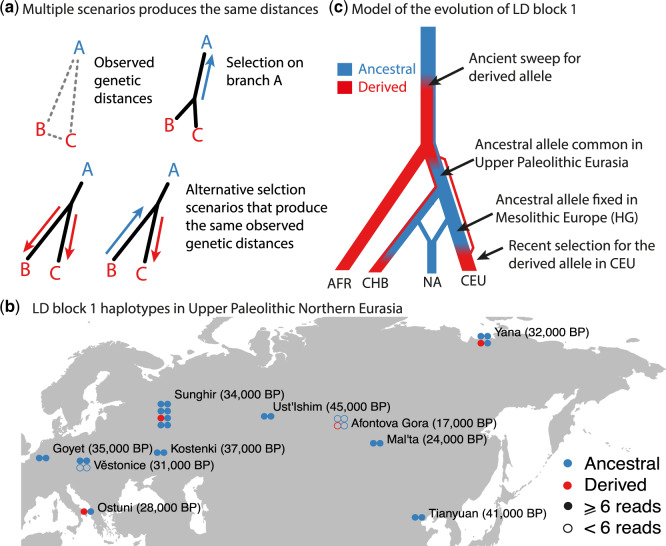Fig. 1.
(a) The PBS compares genetic differentiation (branch length) between three populations. If a new mutation (blue) is under selection in one population (A), the branch leading to A will be longer—a signal of selection. If a haplotype that exists in the ancestral population (red) is under selection in both populations B and C then, because B and C look very similar, the PBS misattributes the long branch to A, instead of to B and C. (b) LD block 1 haplotypes in Upper Paleolithic Eurasia (Fu et al. 2014, 2016; Raghavan et al. 2014; Sikora et al. 2017, 2019; Yang et al. 2017). Ancestral and derived haplotype defined as haplotypes A and C (Mathieson and Mathieson 2018). (c) Model for the evolution of present-day African (AFR), East Asian (CHB), Native American (NA), and European (CEU) population showing where derived (red) and ancestral (blue) haplotypes are common.

